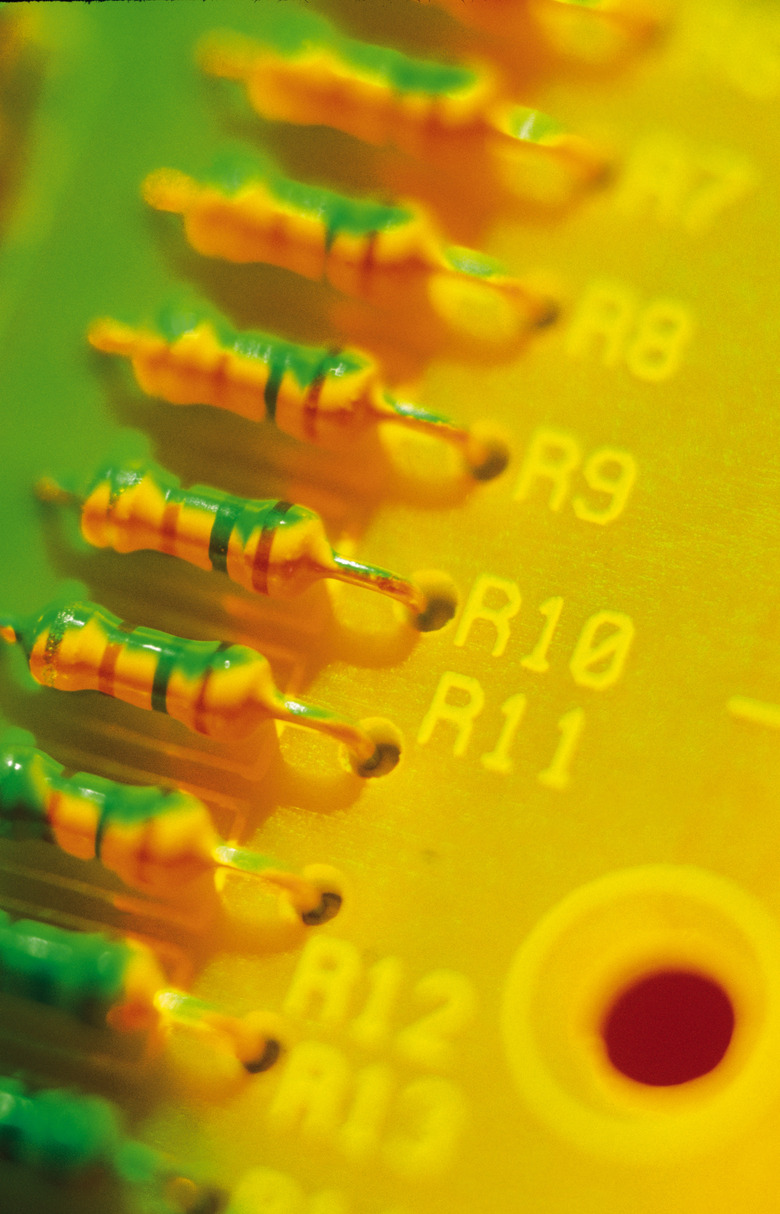How To Lower Amperage
An electrical circuit contains elements such as resistors, capacitors, inductors and voltage sources. They can be wired in series or parallel, and they always provide a return path for the current within a closed loop. In order to lower the amperage of an electrical circuit, you must either lower the circuit's voltage or increase its resistance. Lowering amperage is done by applying Ohm's law, given by the formula I = V/R, where I is the circuit's total current in amperes, V is the voltage and R is the resistance.
Step 1
Add resistors to the circuit to increase the total resistance. A higher resistance results in a lower amperage. The resistance of a resistor is measured in ohms. A resistor works by "resisting" the flow of current through the circuit. Be careful that you don't exceed the manufacturer-listed wattage rating of a resistor.
Step 2
Lower the circuit's amperage by adding a variable resistance device or increasing the resistance on any you already have in the circuit. Variable resistance devices include transistors, FETs and rheostats, which are two-terminal variable resistors.
Step 3
Reduce the voltage in your circuit to lower the amperage. For example, lower the voltage source from a 12V battery to a 9V battery.
Cite This Article
MLA
Mann, Sean. "How To Lower Amperage" sciencing.com, https://www.sciencing.com/lower-amperage-8778999/. 24 April 2017.
APA
Mann, Sean. (2017, April 24). How To Lower Amperage. sciencing.com. Retrieved from https://www.sciencing.com/lower-amperage-8778999/
Chicago
Mann, Sean. How To Lower Amperage last modified March 24, 2022. https://www.sciencing.com/lower-amperage-8778999/
